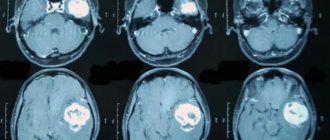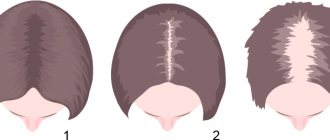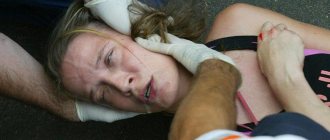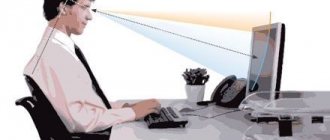The information on this website is not intended to replace personal contact with a qualified health care professional and is not intended to be used as medical advice. Please read our full medical disclaimer.
Exploding head syndrome is a type of parasomnia. Parasomnia is associated with adverse events that accompany sleep. Exploding head syndrome may seem painful and even scary, but it is not. This is a disorder in which a person hears a loud noise right before going to sleep. The noise the patient hears is imaginary. Patients describe the noise as being akin to a loud explosion. This loud bang appears to have originated in the patient's head. While this often happens when a person is about to fall asleep, it can also happen when a person wakes up in the middle of the night.
What do people with EHS hear?
Some patients describe the sound they hear as being like the sound of cymbals hitting. There are also those who compare the sound of an exploding bomb. Sometimes the sound is not as loud and less disturbing. There are times when a sound is accompanied by a flash of light. Some patients experience twitching along with a loud sound. An EHS episode is often painless. However, there are some patients who have reported feeling sudden painful blows to the head during an attack.
The intensity of the sound makes some patients think they are having a stroke. Episodes of exploding head syndrome may vary in frequency. This may happen very rarely. There are also cases where the patient experiences several episodes in just one night. Some patients experience multiple attacks over several nights. Several weeks or months may follow without a single episode before episodes of EHS occur again.
Symptoms
During deep sleep, before waking up or just before falling asleep, a person hears all kinds of noise in his ears, loud and unbearable sounds. As a rule, there are no painful sensations at high audible intensity.
Waking up from such noise, a person may fall into a state of “sleep paralysis”, followed by increased fear and anxiety.
Main symptoms.
- Immediately after waking up, panic attacks make themselves felt.
- The presence of sounds comparable to knocking, ringing, or explosion.
- An additional phenomenon with the described syndrome is in the form of bright flashes in the eyes.
- Cramps affecting individual muscles or entire groups of them.
Symptoms of the pathology make themselves felt sporadically or appear regularly and over a long period of time.
The described state disappears after a few seconds. With multiple repetitions of attacks, the quality of night sleep deteriorates, which negatively affects overall well-being.
The frequency of seizures varies; they can occur once a month or repeat every night.
What are the symptoms of exploding head syndrome?
A person may have exploding head syndrome if they:
- Imagines a loud noise or explosion in the head. The patient may hear the noise before falling asleep. Some patients hear this immediately after waking up in the middle of the night.
- The loud explosion that the patient hears does not cause pain. Although the sound of the explosion is really loud, it does not cause any harm. However, the sound associated with EHS can be quite startling.
- An EHS episode suddenly awakens the patient. The patient also often experiences a feeling of fear along with any of the above episodes.
In addition to the symptoms listed above, an episode of exploding head syndrome can also cause:
- Increased heart rate as a result of being startled by a loud plosive sound.
- Feelings of anxiety or fear. People often associate loud explosive sounds with danger. This may explain why a patient may exhibit feelings of fear upon hearing a loud explosion sound caused by EHS.
- Muscle twitching
And the volleys of a thousand guns merged into a prolonged howl
The syndrome in question was first described at the end of the 19th century: the American specialist Silas Ware Mitchell studied the symptoms of several people who complained of sounds like cannon shots or the ringing of bells, which woke them up at night. It's funny that there were no high bell towers or battle sites near the place where the patients lived.
Later, little attention was paid to the phenomenon until Dr. Sharpless published the work “Exploding Head Syndrome,” where he explained in detail what exactly people with a similar parasomnia - a sleep disorder - have to experience, as well as who is most likely to experience this condition:
“This syndrome is characterized by the feeling that a person is haunted by loud noises when falling asleep or waking up. They are rarely associated with pain, but they bring a lot of fear and stress into life.
Although the symptoms were first described 150 years ago, bursting head syndrome has rarely been discussed. Therefore, we conducted a comprehensive review of the scientific literature on this topic. Although we have summarized several major etiological theories of the condition, it must be understood that none of them yet dominates the field of psychiatry.”
Sharpless also said that women are most susceptible to the syndrome - perhaps the fact is that they are more likely to face stressful circumstances.
What Causes Exploding Head Syndrome?
Researchers have not yet determined the exact cause of exploding head syndrome. Some researchers believe this is a neurological issue. Some doctors believe that this disorder is a result of fear, stress and anxiety. Another possible source of this disorder is minor seizures in the patient's temporal lobe. Some believe that loud explosions are the result of parts of the patient's middle ear suddenly shifting.
There is also the possibility that the loud noise the patient hears is not the result of exploding head syndrome. This could be the result of another disorder or health condition. There is a possibility that the loud bang that the patient hears is a side effect of the medication he is taking. It can also be the result of drug or alcohol abuse. Also, the possibility that this disorder is a consequence of another sleep disorder cannot be discounted.
There is no reliable data indicating how many people suffer from exploding head syndrome. This parasomnia is more common in women than in men. There is no indication that it is more common in a particular age group. Exploding head syndrome can begin at any age . There are reports that it can appear in children as young as 10 years of age. The average age when it first appears in patients is 58 years.
Causes
There are a number of factors, the manifestation of which contributes to the development of attacks with disturbed sleep.
Experts highlight the main ones:
- constant anxiety, chronic stress;
- epileptic activity is observed in the temporal part of the brain;
- discontinuation of medications after prolonged use, these can be benzodiazepines, antidepressants;
- pathological structural transformations in the part of the brain responsible for the perception of noise or in the middle ear;
- mental pathologies;
- night sleep disorder that bothers a person for a long time;
- drug and alcohol abuse.
Each individual case is subject to careful study by a specialist. A full examination of the patient is indicated, and if necessary, additional examination methods are prescribed.
How is this disorder diagnosed?
A careful review of a patient's medical history can help determine whether he or she actually suffers from exploding head syndrome. This may also rule out the possibility that symptoms, even if they indicate EHS, are related to another sleep disorder.
Before visiting a doctor for a consultation, the patient can keep a sleep diary. A sleep diary can help chart a patient's sleep patterns. It can also help the doctor determine whether part of the patient's sleep pattern is causing the problem. When making entries in a sleep diary, it is important for the patient to be as detailed as possible. This may help your doctor make a diagnosis.
There are no tests for exploding head syndrome. Your doctor may recommend an overnight sleep study or polysomnogram. During a sleep study, a doctor or medical technician watches the patient while he or she sleeps. A polysomnogram uses other diagnostic tools that can monitor a patient's heart rate, breathing rate, and brain waves during sleep. There are also sleep studies, where the doctor uses a video camera to record the patient's movements while they sleep. A sleep study can help a doctor determine if another sleep disorder is causing the loud explosions a patient hears.
Diagnostic measures
The condition of an exploding head is determined by a somnologist or neurologist. These specialists understand the intricacies of problems associated with sleep disorders. Initially, a consultation is held with the patient, during which the doctor analyzes all his complaints and unusual conditions.
A survey regarding regular night sleep will be important.
In advanced cases, polysomnography is prescribed. During the procedure, activity in the brain is studied, and heart rate and breathing parameters are taken throughout the night.
During the examination, disorders are identified in certain areas of the central nervous system.
If there are organic pathologies of the central nervous system, the diagnosis is determined using a technique called neuroimaging.
This procedure includes Doppler ultrasound, magnetic resonance therapy, and examination of the arteries in the brain using ultrasound.
How is exploding head syndrome treated?
There are several treatments for exploding head syndrome. These treatments are more focused on eliminating the possible cause of the loud noises. An example would be patients who experience symptoms of EHS during sleep deprivation. If this is the case, then the right course of action is to try to get enough sleep every night. The ideal sleep duration for an adult is 6 to 8 hours.
There are times when exploding head syndrome is a result of stress or anxiety. In this case, the patient should try other means of relaxation. Relaxation techniques can help relieve stress. There are also daily activities that can help relieve stress. Examples: short walks, light exercise, or reading before bed. Taking a warm bath before bed can also help relieve EHS symptoms.
Medications may also help relieve symptoms of EHS. The patient may benefit from medications that affect neurological activity. Clomipramine, an antidepressant, is useful in relieving symptoms of EHS.
Anticonvulsants and tricyclic antidepressants may help the patient. There are also indications that using calcium blockers may help relieve the symptoms of EHS. If a patient believes that medication may help prevent an attack, the physician and patient should carefully discuss possible treatment.
There are cases where the disorder is a result of taking another medication. When EHS is the result of another health problem, the patient should not immediately stop taking the prescribed medications. There are medications with side effects. If a patient needs to stop taking a particular medication, they should gradually stop taking the medication. It is also important to consult with your doctor before stopping the drug. A doctor can help create a plan that will allow a patient to gradually reduce the dosage and frequency of a particular medication.
Exploding head syndrome is a parasomnia associated with the patient's hearing. Only the patient hears the loud noise. This can lead to lack of sleep. The person may be anxious to go back to sleep out of fear of another loud explosion. This can lead to lack of sleep. Depending on what causes exploding head syndrome, there are many treatments available.
Mechanism of the syndrome
Seizures occur due to a malfunction of the brain. This was found out when studying patients with this disease during sleep. An “explosion” disrupts a person’s comfortable sleep zone if the natural mechanisms of the reticular formation are deviated from the norm. When immersed in a healthy night's sleep, consciousness does not turn off instantly, but gradually. The speed of the process depends on the level of brain arousal before falling asleep. The auditory, visual and motor electrically excitable nerve cells gradually turn off.
But explosions and seizures occur due to the suspension and cessation of the activity of the brain. Inhibition weakens the waves that drive sleep, resulting in a burst of energetic neurons in the area on the head responsible for analyzing sound from the external environment. The hyperactivity of neuronal cells manifests itself in the human body as a strong and loud bang during a sleepy dive, and lasts for several seconds.
In addition, in sick people whose heads “explode” at night, reactions and reflexes in the part of the brain that activates the cerebral hemispheres are inhibited.
How to relieve an attack?
With vasospasm and significant circulatory impairment, severe pain occurs, noise and pulsation in the head interfere with work. You can alleviate the condition using the following methods:
- taking painkillers and antispasmodics - helps reduce pain;
- the use of local and systemic anti-inflammatory non-steroidal drugs - reduce pain, can remove pinched nerve endings, relieving inflammation;
- massage – helps relieve neck muscle spasms and eliminate tension.
With these measures you can get rid of the symptoms of cervical osteochondrosis, but only temporarily. The disease must be treated, and complex therapy is required.
Which doctor should I contact for noise in the head due to osteochondrosis?
A neurologist treats osteochondrosis, its symptoms and consequences.
Since the disease has dangerous complications, you should choose an experienced specialist who can develop an individual and effective treatment program. Neurologists from the medical center in Rostov-on-Don have extensive experience in treating neurological diseases.
To make an appointment, you can call or leave a request on the website. A call center operator will contact you within 10-15 minutes.
How is cervical osteochondrosis diagnosed?
Diagnosis begins with studying the patient's complaints. The doctor conducts a survey, determines for himself the key points: localization, intensity, duration, type, nature, conditions for the occurrence of noise. Then he begins a physical examination, palpating the cervical spine, and measuring blood pressure.
Kazieva Aminat Ziyavovna
Neurologist
Rostov State Medical University
Experience since 2012
After the initial examination, a full instrumental examination is required, which includes:
- radiography;
- computed tomography (CT) of the ear, spine;
- magnetic resonance imaging (MRI) of the head;
- audiological examination, including tympanometry, reflectometry;
- duplex scanning or Doppler ultrasound of the vessels of the head and neck.
MRI is the most informative for neck pain and noise in the head, so this type of examination is advisable for everyone who has been diagnosed with cervical osteochondrosis.
The medical department has a Siemens Symphony 1.5 Tesla tomograph, which provides high information content and allows you to identify the slightest changes. Immediately after the examination, the diagnostician announces the results and explains how serious the detected pathology is.
To assess the nature and extent of the pathological process, examination of the thoracic and lumbar spine may be necessary, especially if there is pain in the lower back or chest.
Sometimes, in addition to a neurologist, consultation with an ophthalmologist, otolaryngologist, endocrinologist, orthopedic traumatologist, cardiologist, and neurosurgeon is required.








